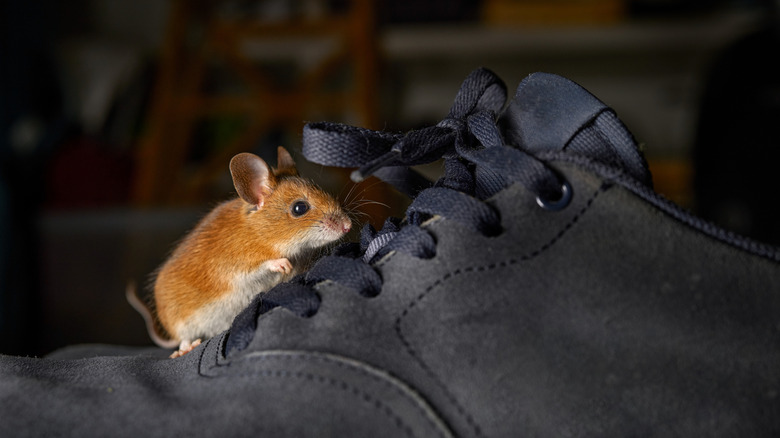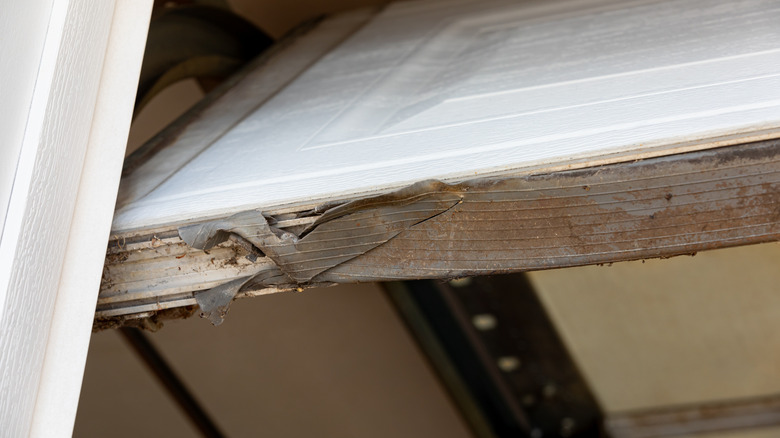How To Seal Garage Door Gaps To Keep Mice And Other Pests Out
We may receive a commission on purchases made from links.
The garage is often one of the easiest entries for critters like mice, insects, and other unwanted guests. The best way to effectively stop these little guys from getting in is with routine inspection and action. Begin by checking around the entire perimeter of your garage door; look for any pools of daylight leaking in around the edges or the bottom seal. These small gaps are perfect for pests to exploit. Don't be afraid to replace the bottom seal on the garage door if needed to create a tighter barrier when closed. The new seal strips will press up against the ground to block any unwanted entry.
Small cracks in walls or around door frames can be sealed quickly with silicone caulk, which remains flexible during temperature changes. If you've got a slightly larger gap, you can stuff the openings with steel wool before applying caulk, which will deter rodents from trying to chew through. There are plenty of telltale signs that pests are lurking in your garage, and they can squeeze through some very tiny openings, so make sure to check thoroughly.
Further tips for fortifying your garage against pests
If you find yourself with larger holes, you can always upgrade to a more durable material. Hardware cloth is a stiff metal mesh that works great for covering ventilation openings or patching holes. Cut pieces to be slightly larger than the gap and secure them with a construction adhesive or a staple gun. If you can see that your garage door doesn't make full contact with the floor, install a new threshold seal, like this 20-foot Papillon Garage Door Bottom Seal Strip. Usually made of rubber, these long strips can be cut to size and easily adjust to uneven surfaces, which ensures your garage door closes tight.
After you've hit all the obvious entry spots in your garage, be sure to keep up with the classic pest control methods. Regularly clean up messes in your garage and never let water sit around for too long. Pests need to eat, so avoid storing pet food in your garage — that goes for other accessible dry goods too. Use products like diatomaceous earth along sealed edges, which will deter and kill insects that try to slip through any cracks. Check your seals seasonally, as extreme heat or cold weather may cause the materials to expand or contract. While no single method is perfect, layering them all together will ensure that you keep your garage pest-free all year.

